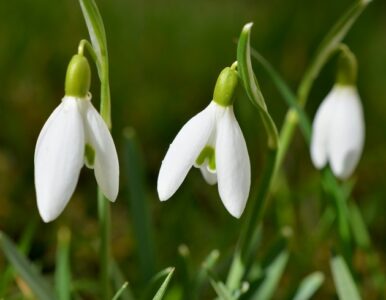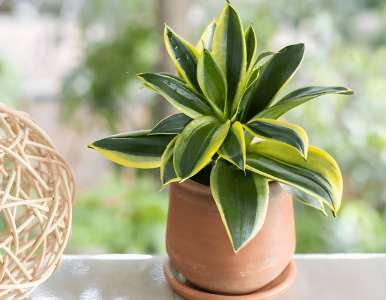Tulips are known for their vibrant and beautiful flowers, but what happens when your tulips fail to bloom as expected? This article will delve into the reasons behind tulips not flowering and explore the factors that may be hindering their growth.
One possible reason for tulips not blooming is poor soil conditions. Tulips require well-draining soil with the right balance of nutrients to thrive. If the soil is too compact or lacks essential nutrients, it can impede the tulips’ ability to produce flowers. It’s important to ensure that the soil is properly prepared before planting tulip bulbs to give them the best chance of blooming.
Another factor that can prevent tulips from flowering is inadequate sunlight. Tulips are sun-loving plants and require at least six hours of direct sunlight per day to reach their full potential. Insufficient sunlight can result in weak blooms or no blooms at all. If your tulips are not receiving enough sunlight due to shade from trees or buildings, consider transplanting them to a sunnier location or trimming back any obstructions that may be blocking the sunlight.
By addressing these potential issues with soil conditions and sunlight, you can increase the chances of your tulips blooming beautifully. In the following sections, we will explore these factors in more detail and provide practical tips to help your tulips thrive and produce stunning flowers.
Poor Soil Conditions
Tulips, with their beauty, can transform any garden, but unexpected non-blooming can be disheartening. Poor soil conditions are often the culprit. Thriving tulips need well-draining soil with the right nutrients. For more insights on cultivating vibrant tulips, visit https://flowerflood.com/, a resource for flower enthusiasts.
When the soil is not suitable for tulips, it can hinder their ability to bloom. For example, if the soil is too compacted or heavy, it may not allow for proper drainage. This can lead to waterlogged roots, which can cause the tulip bulbs to rot. On the other hand, if the soil is too sandy or lacks organic matter, it may not retain enough moisture and nutrients for the tulips to grow and flower.
To ensure that tulips have the best chance of blooming, it is important to prepare the soil before planting. This can be done by adding organic matter, such as compost or well-rotted manure, to improve the soil’s structure and fertility. Additionally, incorporating perlite or sand can help improve drainage in heavy soils.
Here are some key factors to consider when it comes to soil conditions for tulips:
- Well-draining soil: Tulips prefer soil that allows water to drain freely, preventing waterlogging and root rot.
- Nutrient-rich soil: Tulips need a good supply of nutrients, such as nitrogen, phosphorus, and potassium, for healthy growth and flowering.
- pH level: Tulips thrive in slightly acidic to neutral soil, with a pH range of 6.0 to 7.0.
By providing tulips with the right soil conditions, you can greatly improve their chances of blooming beautifully. So, take the time to prepare the soil properly and watch your tulips flourish!
Inadequate Sunlight
Tulips are sun-loving flowers that require full sun or at least 6 hours of direct sunlight each day to thrive and produce beautiful blooms. Sunlight is essential for the process of photosynthesis, which is responsible for converting sunlight into energy that the tulip plant needs to grow and flower.
When tulips do not receive enough sunlight, it can have a negative impact on their ability to bloom. Without adequate sunlight, the tulip plant may not have enough energy to produce flowers or the blooms may be weak and less vibrant. The lack of sunlight can also cause the tulip stems to become elongated and weak, making them more susceptible to bending or breaking.
To ensure that your tulips receive the necessary sunlight, it is important to plant them in a location that receives full sun or has direct sunlight for at least 6 hours a day. If you have limited sunlight in your garden, consider planting your tulips in containers that can be moved to sunnier spots throughout the day.
Overall, providing adequate sunlight is crucial for the successful blooming of tulips. With the right amount of sunlight, your tulips will thrive and reward you with a stunning display of colorful flowers.
Tulips are known for their vibrant and beautiful flowers, but sometimes they can fail to bloom as expected. One of the reasons behind this could be poor soil conditions. Tulips require well-draining soil with the right balance of nutrients for optimal growth and flowering.
When the soil is too compact or lacks the necessary nutrients, it can hinder the tulips’ ability to bloom. This is why it is crucial to prepare the soil properly before planting tulips. Adding organic matter, such as compost, can help improve soil structure and provide the necessary nutrients.
If you notice that your tulips are not blooming as expected, it might be worth checking the soil conditions. A simple soil test can provide valuable information about the pH level and nutrient content of the soil. Based on the test results, you can make the necessary amendments to create a more suitable environment for your tulips to thrive and bloom.
Frequently Asked Questions
- Why are my tulips not flowering?Tulips may not flower due to poor soil conditions or inadequate sunlight. Ensure that the soil is well-draining and contains the necessary nutrients for optimal growth. Also, make sure your tulips receive at least 6 hours of direct sunlight per day.
- What kind of soil do tulips need?Tulips require well-draining soil that is rich in nutrients. Avoid heavy clay or compacted soil as it can hinder their growth. A sandy loam soil with good organic matter content is ideal for tulips.
- Can I plant tulips in shade?Tulips thrive in full sun or partial shade. While they can tolerate some shade, it is recommended to provide them with at least 6 hours of direct sunlight per day for optimal flowering. Insufficient sunlight may result in weak or no blooms.
- When should I plant tulip bulbs?Tulip bulbs are typically planted in the fall, around 6-8 weeks before the ground freezes. This allows them to establish roots before winter and bloom in spring. Planting too early or too late may affect their flowering.
- How deep should I plant tulip bulbs?Tulip bulbs should be planted at a depth of about 6-8 inches, measured from the base of the bulb. This ensures proper insulation and stability for the plant. Planting too shallow or too deep can impact their growth and flowering.






